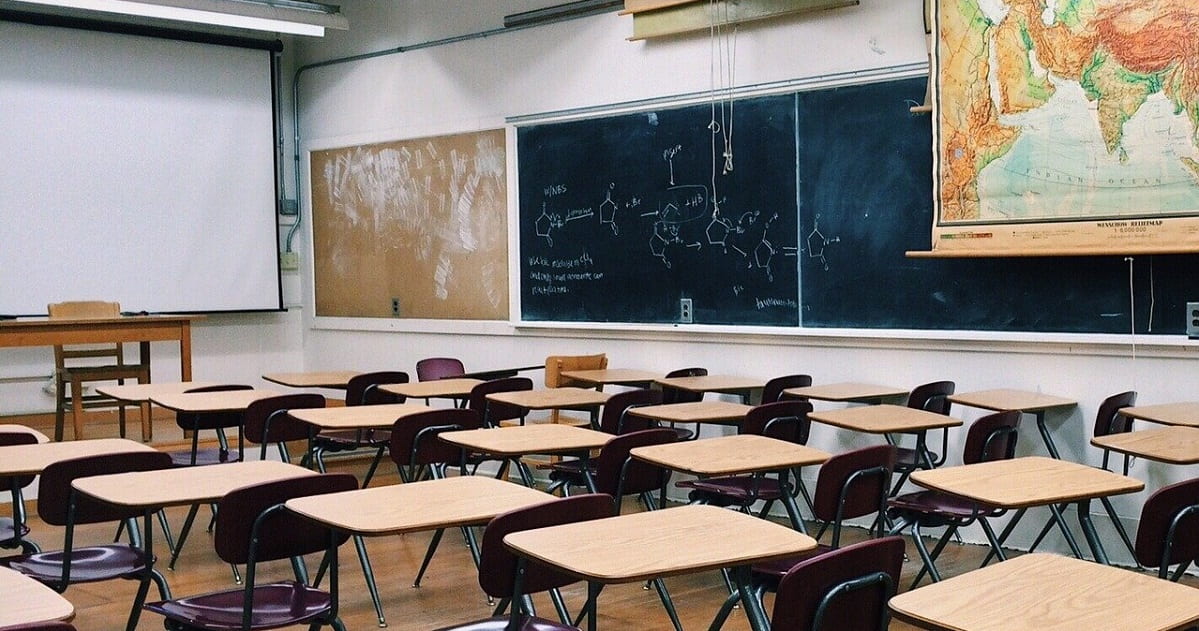
Our personalities can come out in many ways, and we tend to broadcast those personalities pretty loudly though the way in which we set up our spaces. From the colors we choose to the layout of the room, a classroom setup can be just as revealing about someone’s personality as the way in which they choose to decorate their home. For those of you that are heading back to the classroom this fall, what does your classroom setup reveal about you and what impression do you want to give your students as they walk through those classroom doors for the first time? And for those that are going to be hosting a virtual classroom this year, take a peek at this post for some tips on designing your virtual space for effective and engaging learning.
Colors can speak louder than words
For some teachers, the color of their classroom walls or the main color theme that they choose to go with can say some pretty in-depth things about their personality. They can also evoke different emotions and atmospheres for your students. Choose colors that help convey a certain atmosphere or use different colors in different parts of your room to help create a particular atmosphere. How about blues and greens for a reading nook? Or orange for science stations?
Creating a Welcoming Space
Ok so you know what colors can help evoke different atmospheres, but what about everything else? How can you set up a classroom to help ensure that it is a welcoming space for all your students and be a reflection of who you are as a teacher.
Helping students feel comfortable and welcome especially in a time where there are so many unknowns, with so many new ways in which they are required to do things, can affect the way a classroom functions and how students learn. Look to incorporate some of these tips below to help create that welcoming and inclusive space.
- Keep it simple: Don’t make it over stimulating. You don’t have to cover every empty wall space in the room or fill every bookshelf. Try to keep it simple, spacious and visually clutter free. This can help from distracting young brains and not be overstimulating visually.
- Keep it purposeful: Make your classroom a place where your students and you want to come everyday. Use quotes or set up a classroom motto to create a certain mindset when you enter the room and then refer to them often to help students better understand their meanings. Not sure what you want your classroom motto to be? Check out this post for more ideas.
- Keep it open for everyone: Create a space where all students can showcase their work. Make sure there is enough space in your classroom for your students to feel like they are a part of it and can contribute to. Create a bulletin board that is just for student work.
- Keep it efficient: Classrooms might look a little different this year as many are needing to account for social distancing. Organize your room with purpose and eliminate any pieces that have no real purpose. With limited space, every square foot matters so use it wisely.
- Keep it connected: Don’t forget to bring some “you” into the space. Big sports fan? Incorporate some of that into the classroom. Love the outdoors? Use a window seal to host some live plants that your students can help take care of. Bringing parts of you into a space gives permissions for your students to do the same. And when we feel like we are connected to a space, we are more likely to feel safe in trying and learning new things.
Where we learn matters and what that space represents matters. Create your classroom with purpose, warmth, love and an open mind and a sprinkle of your personality. Your students will feel it and so will you.
Categorized as: Tips for Teachers and Classroom Resources
Tagged as: Classroom Instruction, Nesting

